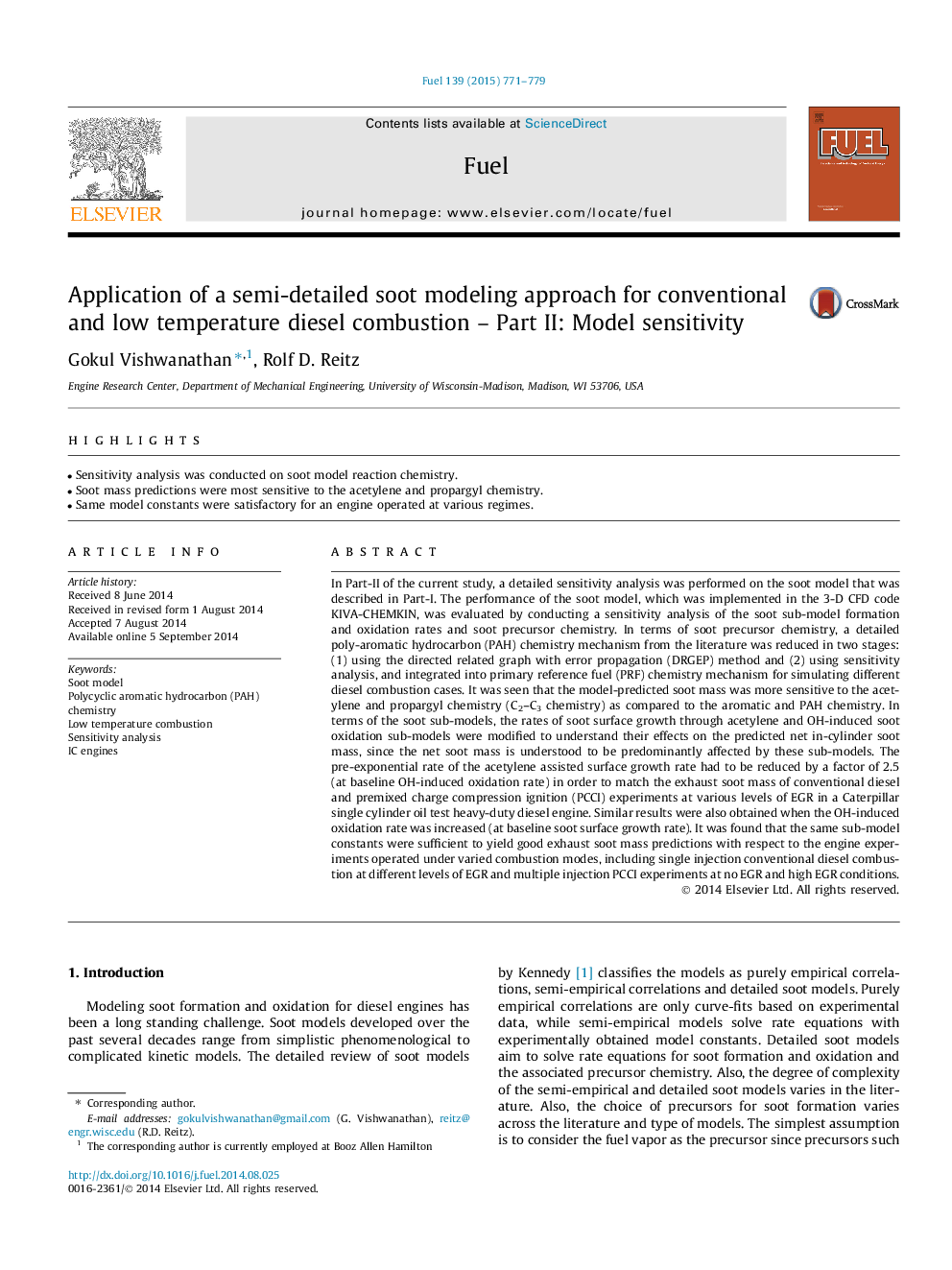| کد مقاله | کد نشریه | سال انتشار | مقاله انگلیسی | نسخه تمام متن |
|---|---|---|---|---|
| 6636601 | 461134 | 2015 | 9 صفحه PDF | دانلود رایگان |
عنوان انگلیسی مقاله ISI
Application of a semi-detailed soot modeling approach for conventional and low temperature diesel combustion - Part II: Model sensitivity
ترجمه فارسی عنوان
استفاده از یک روش مدل سازی نیمه جامد برای احتراق دیزل معمولی و کم دما - قسمت دوم: حساسیت مدل
دانلود مقاله + سفارش ترجمه
دانلود مقاله ISI انگلیسی
رایگان برای ایرانیان
کلمات کلیدی
موضوعات مرتبط
مهندسی و علوم پایه
مهندسی شیمی
مهندسی شیمی (عمومی)
چکیده انگلیسی
In Part-II of the current study, a detailed sensitivity analysis was performed on the soot model that was described in Part-I. The performance of the soot model, which was implemented in the 3-D CFD code KIVA-CHEMKIN, was evaluated by conducting a sensitivity analysis of the soot sub-model formation and oxidation rates and soot precursor chemistry. In terms of soot precursor chemistry, a detailed poly-aromatic hydrocarbon (PAH) chemistry mechanism from the literature was reduced in two stages: (1) using the directed related graph with error propagation (DRGEP) method and (2) using sensitivity analysis, and integrated into primary reference fuel (PRF) chemistry mechanism for simulating different diesel combustion cases. It was seen that the model-predicted soot mass was more sensitive to the acetylene and propargyl chemistry (C2-C3 chemistry) as compared to the aromatic and PAH chemistry. In terms of the soot sub-models, the rates of soot surface growth through acetylene and OH-induced soot oxidation sub-models were modified to understand their effects on the predicted net in-cylinder soot mass, since the net soot mass is understood to be predominantly affected by these sub-models. The pre-exponential rate of the acetylene assisted surface growth rate had to be reduced by a factor of 2.5 (at baseline OH-induced oxidation rate) in order to match the exhaust soot mass of conventional diesel and premixed charge compression ignition (PCCI) experiments at various levels of EGR in a Caterpillar single cylinder oil test heavy-duty diesel engine. Similar results were also obtained when the OH-induced oxidation rate was increased (at baseline soot surface growth rate). It was found that the same sub-model constants were sufficient to yield good exhaust soot mass predictions with respect to the engine experiments operated under varied combustion modes, including single injection conventional diesel combustion at different levels of EGR and multiple injection PCCI experiments at no EGR and high EGR conditions.
ناشر
Database: Elsevier - ScienceDirect (ساینس دایرکت)
Journal: Fuel - Volume 139, 1 January 2015, Pages 771-779
Journal: Fuel - Volume 139, 1 January 2015, Pages 771-779
نویسندگان
Gokul Vishwanathan, Rolf D. Reitz,
